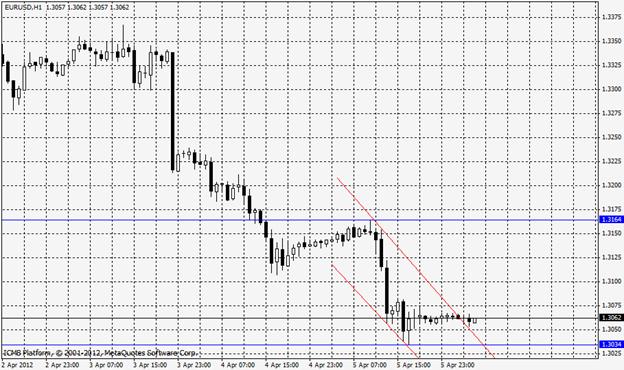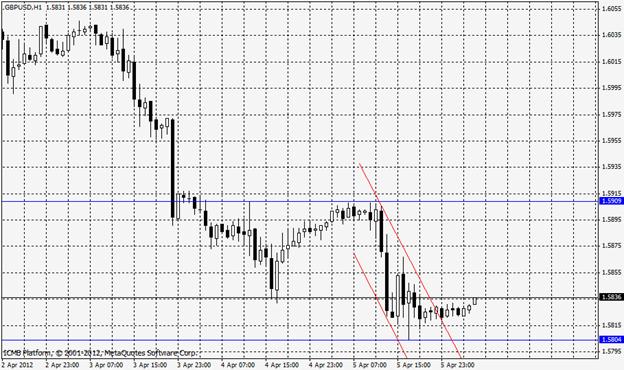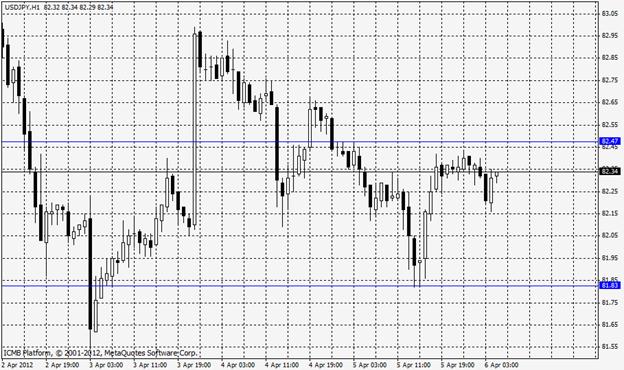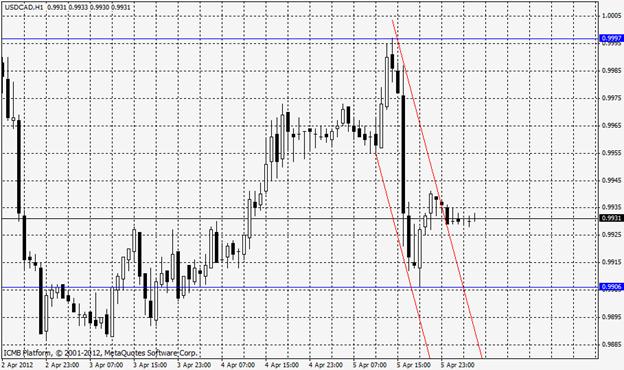The greenback pushed euro more to fall to a three-week low on Friday as Spanish and Italian bonds slumped and France borrowing costs increased, bubbling concern that the region’s debt crisis is spreading in the entire region. Spain’s 10-year bonds declined for a third day and pushed yield on the country’s benchmark debt seven basis points higher to 5.76 percent after an International Monetary Fund spokesman said the nation is facing severe challenges.
Italy’s 10-year yield surged seven basis points to 5.44 percent with the spread over bonds widening 12 basis points to 370 basis points. France auctioned 4.32 billion euros of 10-year debt at an average yield of 2.98 percent, up from 2.91 percent at the previous offering on March 1.
Borrowing costs for five-year and 15-year debt also increased. Tensions in the euro region are coming back and confidence in U.S. economy has resulted in a much stronger U.S. dollar. Euro weakened and touched below 1.3040. It might touch below 1.3000 levels as employers are expected to add 207,000 jobs when the U.S nonfarm payroll is released. EUR/USD" title="EUR/USD" width="2278" height="1495">
EUR/USD" title="EUR/USD" width="2278" height="1495">
GBP/USD
Sterling dropped 0.4 percent after U.K. manufacturing output surprisingly declined for a second month in February, suggesting the economy’s return to growth might be uneven. Factory output fell 1 percent from January, the most since April last year, the Office for National Statistics said. U.K. manufacturing, nine sub-sectors declined in February from January, three rose and one was unchanged.
The decline was led by transport equipment, rubber and plastic products and textiles. From a year earlier, factory output fell 1.4 percent in February. In contrast to manufacturing output, industrial production which accounts for about 15 percent of GDP surged 0.4 percent in February from January.
Rising output in mining, quarrying, oil and gas extraction and utilities such as electricity and water made the industrial production surged. Despite from the good figure from industrial production, stronger greenback overpowered sterling and touched below 1.5840 levels.Meanwhile, Bank of England policy makers maintained their asset- purchase target at 325 billion pounds ($517 billion) and kept their benchmark interest rate at a record low of 0.5 percent. GBP/USD" title="GBP/USD" width="2278" height="1495">
GBP/USD" title="GBP/USD" width="2278" height="1495">
USD/JPY
After lawmakers raised pressure for extra action by blocking a candidate for the bank’s board and renewing calls for a more proactive monetary policy, the Bank of Japan might expand stimulus this month. Parliament’s upper house rejected BNP Paribas SA economist Ryutaro Kono, described by Goldman Sachs Group Inc. (GS) as holding similar views to Governor Masaaki Shirakawa, who said that monetary policy alone cannot solve deflation.
The central bank might stand in favor of easing at a two-day meeting that will end 10th of April when price projections will reveal below 1 percent as targeted inflation. Japanese stocks pared losses on the decision by the upper house, remained down 0.5 percent after falling demand for Spanish bonds refocused attention on Europe’s debt crisis. The yen strengthened for a second day, touched below 82.20 per dollar. Uncertainties including the strong yen and the political mess are the reason why we cannot put optimism around Japan. There were no economic data released Thursday in Japan. USD/JPY" title="USD/JPY" width="2278" height="1495">
USD/JPY" title="USD/JPY" width="2278" height="1495">
USD/CAD
Canadian dollar strengthened and registered its first weekly gain in a month against the U.S. dollar as employers added the most jobs since September 2008 last month. Employment rose by 82,300 following a decline of 2,800 in February and lowered the unemployment level to 7.2 percent from 7.4 percent.The growth in unemployment should add to household spending that the Bank of Canada said last month has been rising faster than anticipated.
Governor Mark Carney said that high household debt loads and sluggish exports remain major risks to the expansion; he kept the key lending rate at 1 percent since September 2010 to boost demand. Full-time employment in Canada jumped by 70,000 and part-time positions grew by 12,400 in March. Over-all, about 42,600 jobs were created by private companies and 20,900 in the public sector. The number one sector whcih added the most jobs was health care, and social assistance added 31,500 jobs followed by 28,300 jobs for information, culture and recreation firms and manufacturing by 11,800, the fourth consecutive increase.
Workers designated by Statistics Canada as employees rose by 63,600 while the self-employed rose by 18,800 and Public administration work rose by 15,000 positions. The actual figure was really surprising, though the anticipated one was a gain but not that much. It made the loonie stronger than the greenback and gained 0.3 percent. USD/CAD" title="USD/CAD" width="2278" height="1495">
USD/CAD" title="USD/CAD" width="2278" height="1495">
- English (UK)
- English (India)
- English (Canada)
- English (Australia)
- English (South Africa)
- English (Philippines)
- English (Nigeria)
- Deutsch
- Español (España)
- Español (México)
- Français
- Italiano
- Nederlands
- Português (Portugal)
- Polski
- Português (Brasil)
- Русский
- Türkçe
- العربية
- Ελληνικά
- Svenska
- Suomi
- עברית
- 日本語
- 한국어
- 简体中文
- 繁體中文
- Bahasa Indonesia
- Bahasa Melayu
- ไทย
- Tiếng Việt
- हिंदी
Major Currency Pairs Analysis: April 8, 2012
Published 04/06/2012, 07:37 AM
Updated 04/25/2018, 04:40 AM
Major Currency Pairs Analysis: April 8, 2012
EUR/USD
Latest comments
Loading next article…
Install Our App
Risk Disclosure: Trading in financial instruments and/or cryptocurrencies involves high risks including the risk of losing some, or all, of your investment amount, and may not be suitable for all investors. Prices of cryptocurrencies are extremely volatile and may be affected by external factors such as financial, regulatory or political events. Trading on margin increases the financial risks.
Before deciding to trade in financial instrument or cryptocurrencies you should be fully informed of the risks and costs associated with trading the financial markets, carefully consider your investment objectives, level of experience, and risk appetite, and seek professional advice where needed.
Fusion Media would like to remind you that the data contained in this website is not necessarily real-time nor accurate. The data and prices on the website are not necessarily provided by any market or exchange, but may be provided by market makers, and so prices may not be accurate and may differ from the actual price at any given market, meaning prices are indicative and not appropriate for trading purposes. Fusion Media and any provider of the data contained in this website will not accept liability for any loss or damage as a result of your trading, or your reliance on the information contained within this website.
It is prohibited to use, store, reproduce, display, modify, transmit or distribute the data contained in this website without the explicit prior written permission of Fusion Media and/or the data provider. All intellectual property rights are reserved by the providers and/or the exchange providing the data contained in this website.
Fusion Media may be compensated by the advertisers that appear on the website, based on your interaction with the advertisements or advertisers.
Before deciding to trade in financial instrument or cryptocurrencies you should be fully informed of the risks and costs associated with trading the financial markets, carefully consider your investment objectives, level of experience, and risk appetite, and seek professional advice where needed.
Fusion Media would like to remind you that the data contained in this website is not necessarily real-time nor accurate. The data and prices on the website are not necessarily provided by any market or exchange, but may be provided by market makers, and so prices may not be accurate and may differ from the actual price at any given market, meaning prices are indicative and not appropriate for trading purposes. Fusion Media and any provider of the data contained in this website will not accept liability for any loss or damage as a result of your trading, or your reliance on the information contained within this website.
It is prohibited to use, store, reproduce, display, modify, transmit or distribute the data contained in this website without the explicit prior written permission of Fusion Media and/or the data provider. All intellectual property rights are reserved by the providers and/or the exchange providing the data contained in this website.
Fusion Media may be compensated by the advertisers that appear on the website, based on your interaction with the advertisements or advertisers.
© 2007-2025 - Fusion Media Limited. All Rights Reserved.
